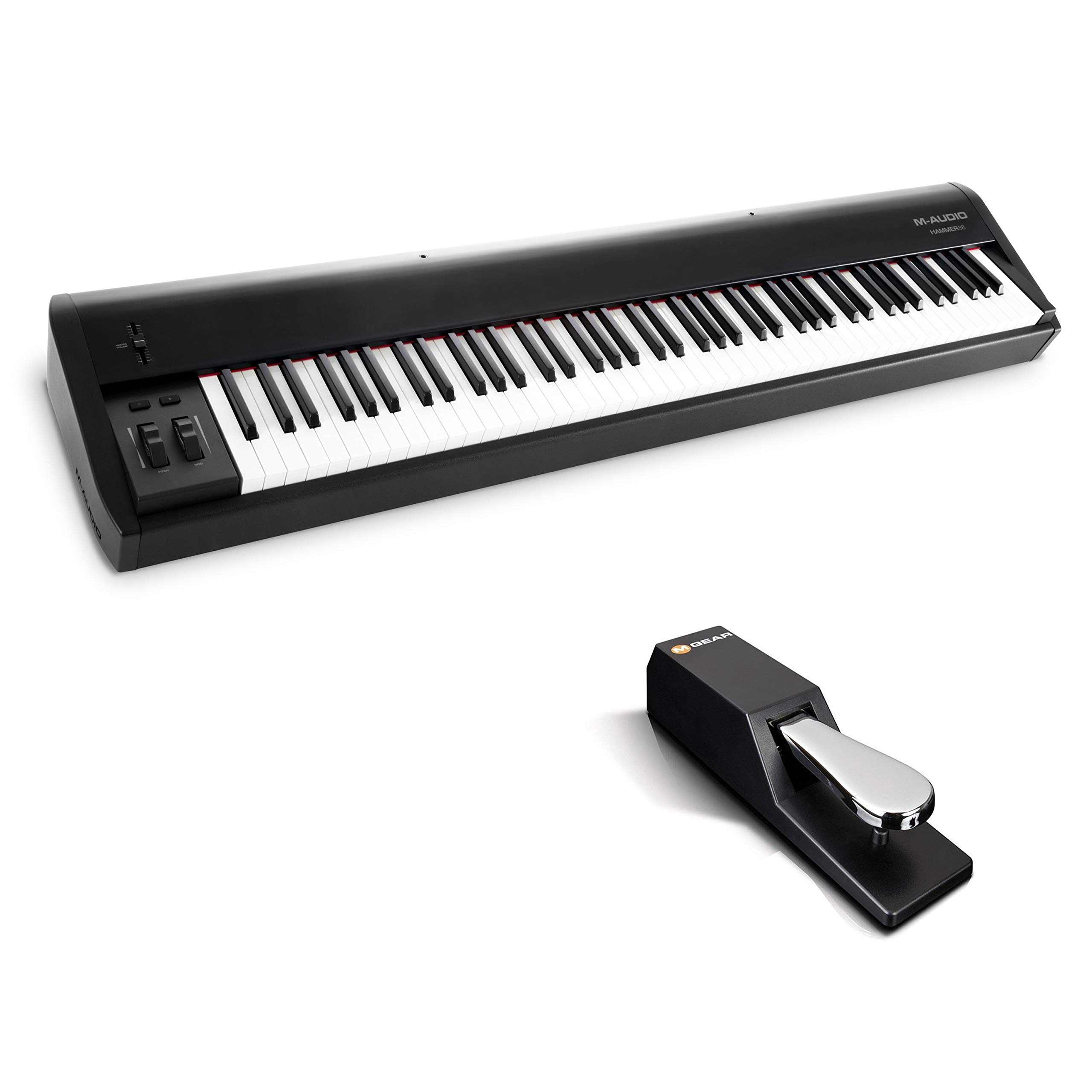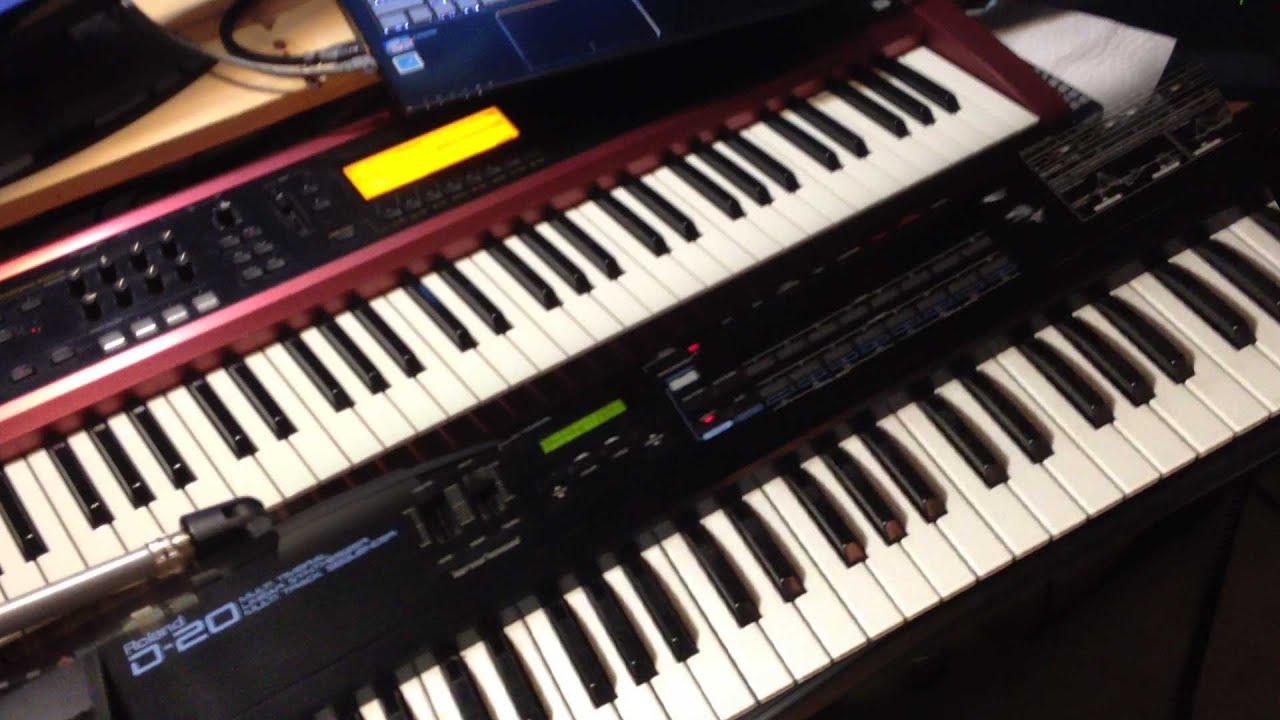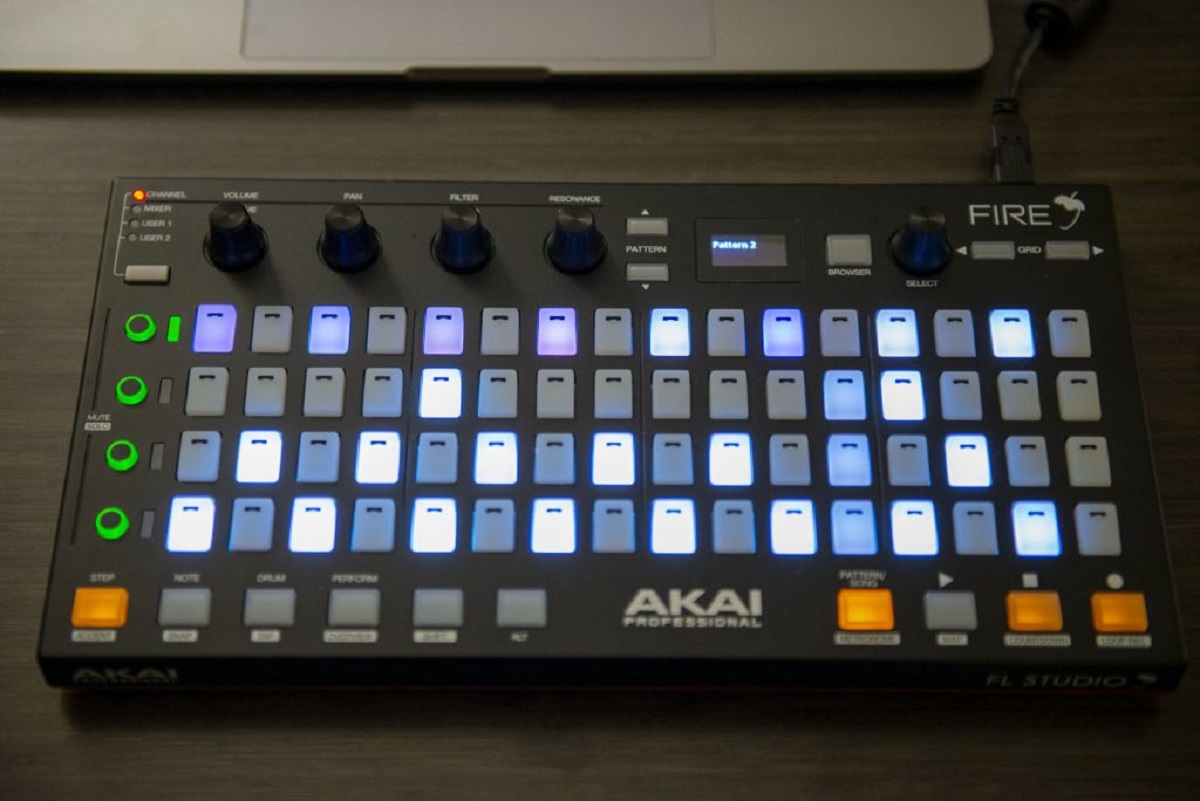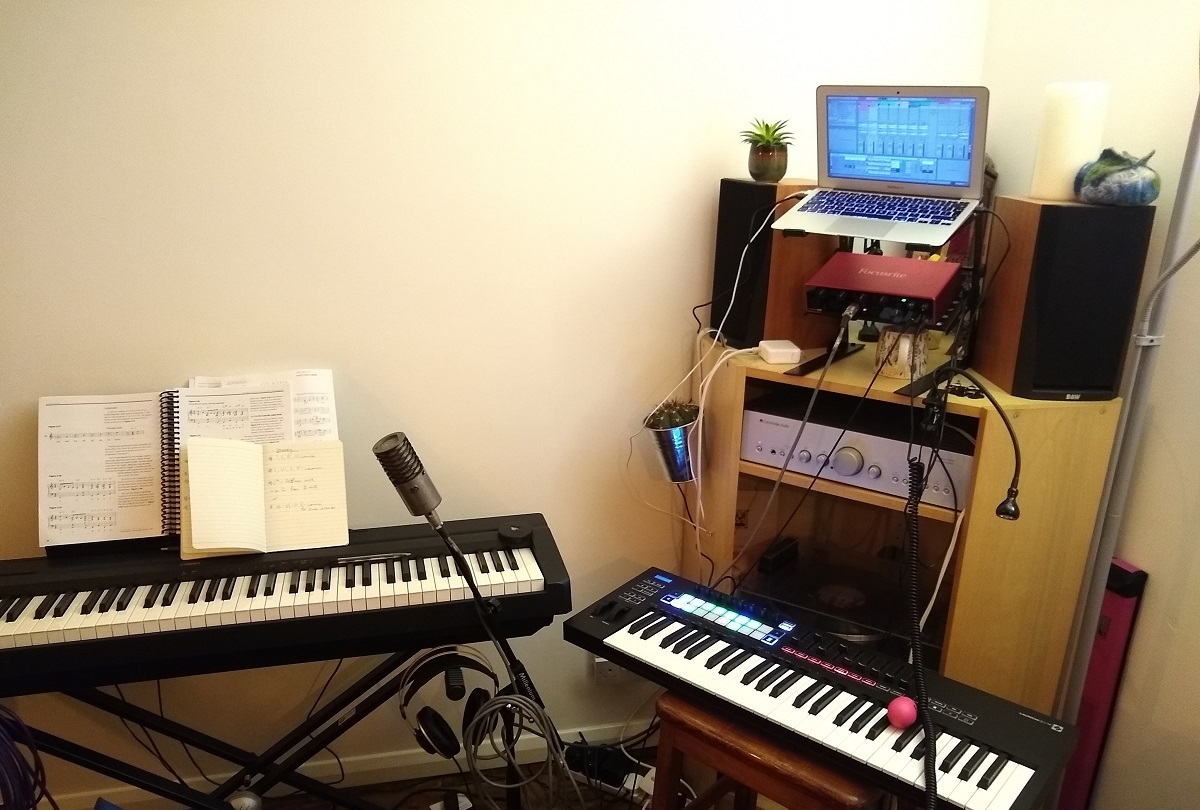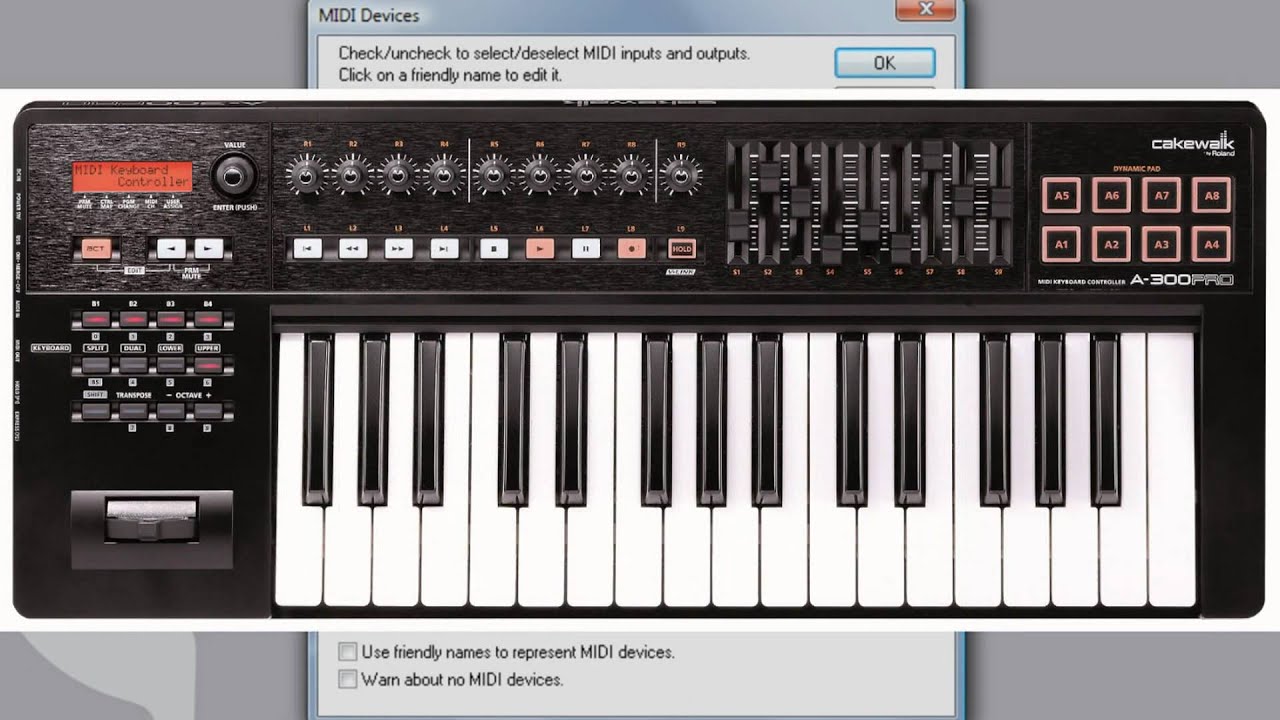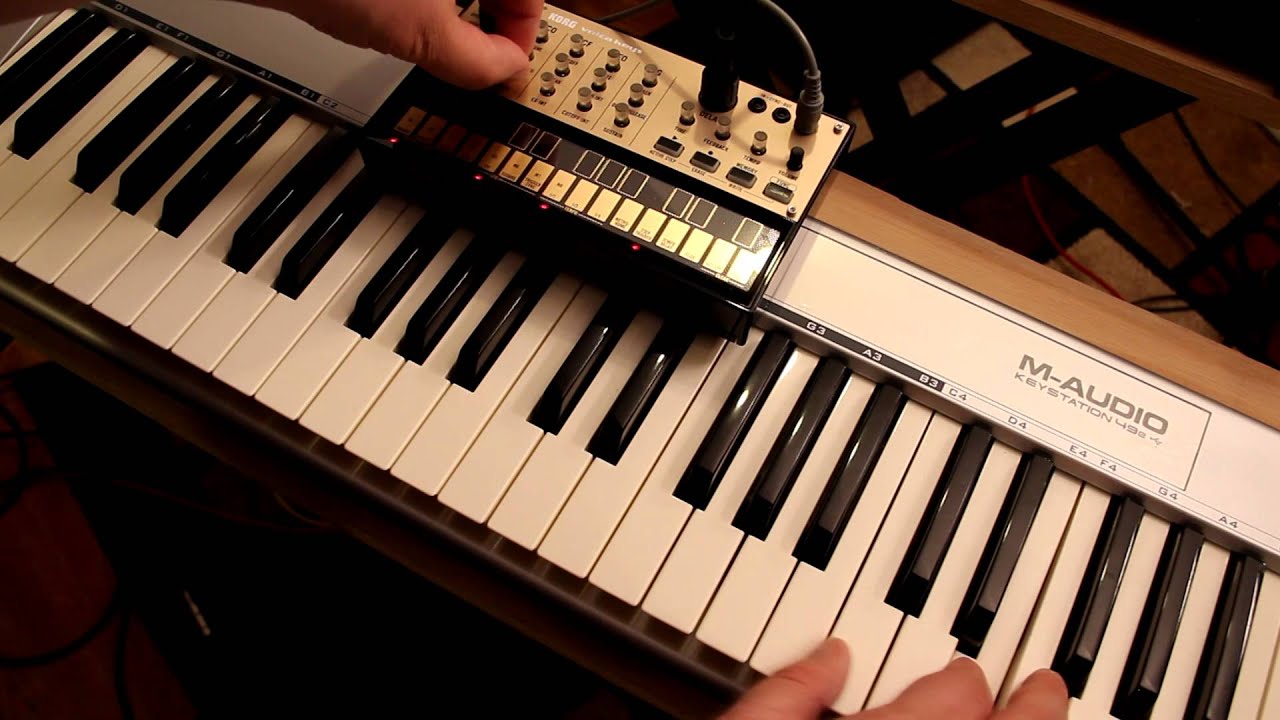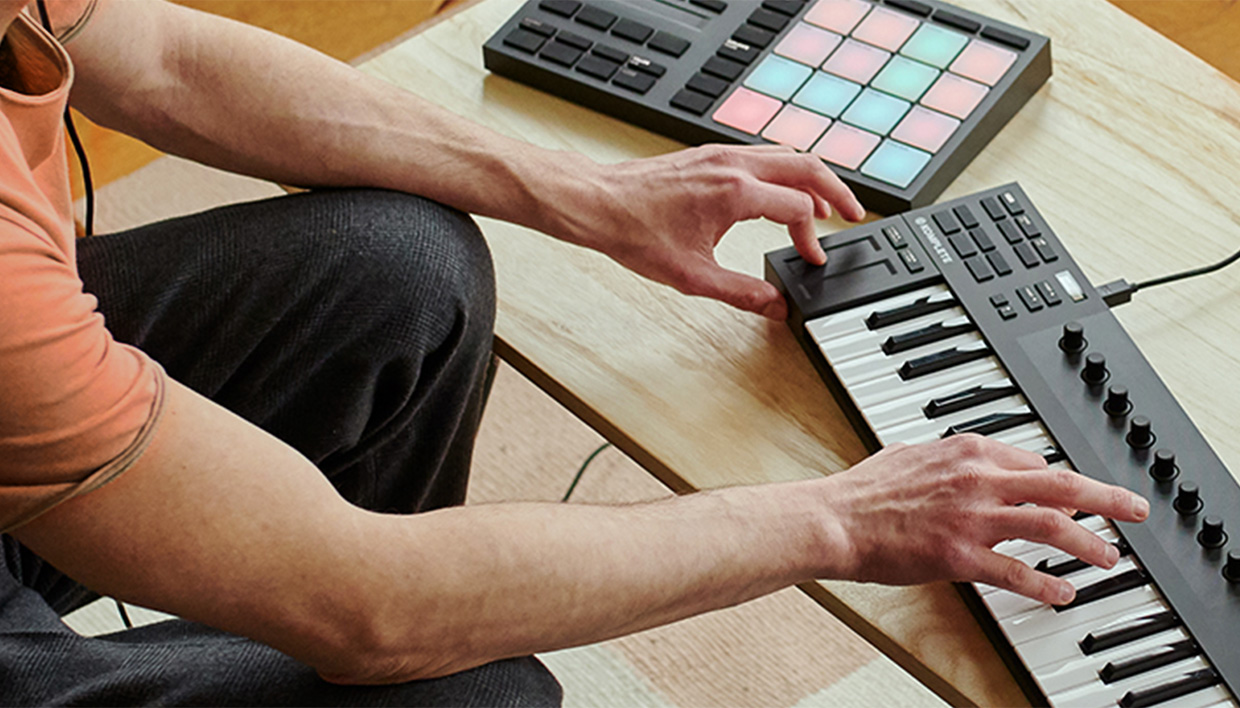Introduction
Introduction
So, you've decided to dive into the world of music production and are considering using a MIDI keyboard controller. Congratulations! This versatile piece of equipment offers a wide array of possibilities for creating and performing music. Whether you're a seasoned musician or a novice producer, a MIDI keyboard controller can be an invaluable tool in your creative arsenal.
In this guide, we'll explore the ins and outs of using a MIDI keyboard controller, from choosing the right one for your needs to setting it up and integrating it with your digital audio workstation (DAW). We'll delve into the fundamentals of MIDI (Musical Instrument Digital Interface) and provide practical tips for playing, recording, and customizing your MIDI keyboard controller to suit your unique workflow.
By the end of this guide, you'll have a solid understanding of how to harness the full potential of your MIDI keyboard controller, empowering you to express your musical ideas with precision and creativity.
Whether you're a solo artist looking to craft intricate melodies, a producer aiming to lay down captivating beats, or a composer seeking to orchestrate grand symphonies, a MIDI keyboard controller can serve as your trusted companion in the realm of music production.
So, let's embark on this enlightening journey and unravel the myriad possibilities that await as we demystify the art of using a MIDI keyboard controller.
Choosing the Right MIDI Keyboard Controller
When selecting a MIDI keyboard controller, it’s essential to consider your specific musical needs and production workflow. With a plethora of options available, ranging from compact 25-key controllers to expansive 88-key behemoths, finding the right fit for your creative endeavors is paramount.
First and foremost, assess the size and number of keys that best align with your playing style and space constraints. If you’re a pianist or require a wide range for intricate compositions, a full-sized 88-key controller may be ideal. Conversely, if portability and space-saving are priorities, a 49-key or 61-key controller could offer a balance of versatility and convenience.
Consider the type and number of additional controls, such as knobs, faders, and pads, that complement your preferred music production techniques. These assignable controls can significantly enhance your ability to manipulate virtual instruments, effects, and mixing parameters within your DAW.
Furthermore, evaluate the connectivity options provided by the MIDI keyboard controller. USB-powered controllers offer seamless integration with computers and mobile devices, while traditional 5-pin MIDI connections ensure compatibility with a wide range of hardware and sound modules.
Another crucial aspect to contemplate is the integration of aftertouch and velocity sensitivity, which can imbue your performances with nuanced expression and dynamics. Additionally, some controllers feature weighted or semi-weighted keys, replicating the feel of acoustic pianos and enhancing the tactile experience for pianists and keyboardists.
For producers and performers delving into electronic music production, the inclusion of drum pads and arpeggiators can be pivotal in augmenting rhythmic creativity and live performance capabilities.
Ultimately, the key to choosing the right MIDI keyboard controller lies in aligning its features and capabilities with your musical aspirations and technical requirements. By carefully assessing these factors, you can make an informed decision that empowers you to unleash your musical potential with a seamlessly integrated and personalized MIDI keyboard controller.
Setting Up Your MIDI Keyboard Controller
Setting up your MIDI keyboard controller is a pivotal step in seamlessly integrating it into your music production environment. Whether you’re a seasoned music producer or a newcomer to the world of MIDI, the process can be straightforward and rewarding with the right approach.
First and foremost, ensure that you have the necessary drivers installed on your computer to facilitate communication between the MIDI keyboard controller and your digital audio workstation (DAW). Many modern MIDI controllers are class-compliant, meaning they can be recognized by your computer’s operating system without the need for additional drivers. However, it’s advisable to check the manufacturer’s website for the latest drivers and firmware updates to ensure optimal performance.
Once the drivers are in place, connect your MIDI keyboard controller to your computer using a USB cable or MIDI cables, depending on the available connectivity options. Most controllers feature USB connectivity, simplifying the setup process and enabling immediate communication with your DAW.
After connecting the MIDI keyboard controller, launch your DAW and navigate to the preferences or settings menu to configure the MIDI input and output settings. Here, you can select your MIDI controller as the input device, enabling it to transmit MIDI data to your DAW for recording and playback.
Many DAWs also allow you to map the MIDI controller’s knobs, faders, and pads to various parameters within the software, providing a tailored and intuitive control interface for your music production tasks.
It’s essential to familiarize yourself with the MIDI keyboard controller’s MIDI implementation chart, which outlines the specific MIDI messages transmitted by each control element. This knowledge can be invaluable when mapping the controller to your DAW and customizing its functionality to suit your workflow.
Finally, take the time to explore any additional software or utilities provided by the MIDI keyboard controller’s manufacturer. These resources may offer advanced customization options, firmware updates, and integration with virtual instruments and effects, further enhancing the capabilities of your MIDI controller.
By following these steps and delving into the nuances of MIDI controller setup, you can harness the full potential of your controller and embark on a seamless and inspiring music production journey.
Understanding MIDI and DAWs
Before delving into the intricacies of using a MIDI keyboard controller, it’s essential to grasp the fundamentals of MIDI (Musical Instrument Digital Interface) and its integration with digital audio workstations (DAWs). MIDI serves as the universal language of electronic music production, facilitating communication between musical instruments, controllers, and software.
At its core, MIDI is a protocol that transmits musical data, such as note information, velocity, modulation, and control messages, between interconnected devices. Unlike audio signals, MIDI data does not contain sound itself but rather the instructions for generating sound on compatible devices.
When using a MIDI keyboard controller, each key press and modulation gesture generates MIDI data that is transmitted to a connected DAW. Within the DAW, this MIDI data can be used to trigger virtual instruments, control parameters, and record performances with unparalleled precision and flexibility.
DAWs, on the other hand, serve as the central hub for music production, offering a comprehensive suite of recording, editing, and mixing tools. These software platforms provide a canvas for integrating MIDI and audio tracks, arranging musical compositions, and applying a myriad of effects and processing to achieve professional-quality productions.
When using a MIDI keyboard controller with a DAW, the MIDI data transmitted by the controller can be recorded and edited within the DAW’s MIDI sequencer, allowing for precise manipulation of note timing, velocity, and expression. Additionally, MIDI data can be used to trigger virtual instruments, enabling users to play and record realistic-sounding emulations of acoustic and electronic instruments directly within the DAW environment.
Furthermore, DAWs offer extensive capabilities for customizing MIDI controller mappings, allowing users to assign MIDI messages to various parameters within the software, such as virtual instrument parameters, mixer controls, and effect parameters. This level of integration empowers users to create personalized control interfaces tailored to their specific production workflows.
Understanding the symbiotic relationship between MIDI and DAWs is pivotal in harnessing the full potential of a MIDI keyboard controller. By leveraging the capabilities of MIDI and DAW integration, musicians and producers can unlock a world of creative possibilities and streamline their music production processes with unparalleled precision and expressiveness.
Playing and Recording with Your MIDI Keyboard Controller
Playing and recording with a MIDI keyboard controller opens up a realm of expressive possibilities for musicians and producers. Whether you’re crafting intricate melodies, laying down captivating chord progressions, or triggering rhythmic patterns, the MIDI keyboard controller serves as a versatile instrument for capturing and shaping musical ideas within a digital audio workstation (DAW).
When playing a MIDI keyboard controller, the velocity-sensitive keys respond to the nuances of your playing, allowing for dynamic and expressive performances. The keys’ sensitivity to varying degrees of pressure enables you to convey subtle variations in volume and expression, akin to playing an acoustic piano or other traditional keyboard instruments.
Moreover, the integration of aftertouch on certain MIDI controllers empowers performers to modulate parameters such as pitch, modulation, or filter cutoff by applying pressure to the keys after striking them. This feature adds an extra layer of expressiveness, enabling musicians to infuse their performances with nuanced articulations and embellishments.
Recording with a MIDI keyboard controller within a DAW offers unparalleled flexibility and precision. As MIDI data is recorded, it captures the subtleties of your performance, including note velocity, duration, and modulation. This recorded MIDI data can be edited and quantized to refine the timing and expression of the performance, ensuring that every note aligns perfectly with the desired musical phrasing.
Additionally, MIDI data can be used to trigger and control virtual instruments within the DAW, allowing for the creation of rich and lifelike musical arrangements. By leveraging the extensive libraries of virtual instruments available in modern DAWs, musicians can explore a vast palette of sounds, from realistic emulations of acoustic instruments to cutting-edge synthesizer textures and beyond.
Furthermore, the MIDI keyboard controller’s assignable knobs, faders, and pads can be utilized to manipulate virtual instrument parameters and effects in real time, adding a layer of interactivity and performance dynamics to your productions. This real-time control capability empowers musicians to craft evolving soundscapes, sculpt intricate textures, and infuse their compositions with captivating sonic nuances.
Whether you’re a solo artist, a producer, or a composer, the ability to play and record with a MIDI keyboard controller offers a gateway to boundless creativity and musical expression. By harnessing the expressive potential of a MIDI keyboard controller within a DAW, musicians and producers can breathe life into their musical visions with precision, emotion, and artistry.
Customizing Your MIDI Keyboard Controller
Customizing your MIDI keyboard controller can significantly enhance your workflow and creative capabilities, allowing you to tailor the controller’s functionality to suit your specific production and performance needs. By leveraging the controller’s assignable controls, MIDI mapping capabilities, and additional software integrations, you can personalize the controller to streamline your music production processes and unleash your artistic vision.
One of the primary avenues for customization lies in mapping the MIDI keyboard controller’s knobs, faders, and pads to various parameters within your digital audio workstation (DAW) and virtual instruments. Most modern MIDI controllers offer extensive MIDI mapping capabilities, enabling you to assign specific MIDI messages to control parameters such as instrument parameters, mixer settings, and effect parameters within your DAW.
Furthermore, many MIDI controllers provide user-friendly software utilities that allow for advanced customization of control assignments, MIDI message configurations, and preset management. These utilities enable you to create personalized control interfaces tailored to your preferred music production techniques and performance styles.
Additionally, exploring the MIDI keyboard controller’s integration with virtual instrument and effect plugins can open up new avenues for customization. Many virtual instruments and effects offer deep integration with MIDI controllers, providing dedicated control mappings, performance macros, and parameter modulation capabilities that can be leveraged to craft immersive and dynamic musical experiences.
For performers and live electronic music artists, customizing the MIDI keyboard controller’s pad assignments, arpeggiator settings, and performance modes can be pivotal in creating captivating and dynamic live performances. By tailoring the controller’s functionality to align with your performance requirements, you can unleash your creativity and engage with your audience in compelling and innovative ways.
Moreover, exploring firmware updates and additional software integrations provided by the MIDI keyboard controller’s manufacturer can unlock new features, performance enhancements, and expanded compatibility with music production software and hardware. Staying abreast of the latest firmware updates and software offerings ensures that you’re maximizing the potential of your MIDI controller and staying ahead of the curve in your music production endeavors.
Ultimately, the process of customizing your MIDI keyboard controller is an opportunity to imbue your music production setup with a personalized touch, empowering you to realize your creative vision with precision and fluidity. By delving into the myriad customization options available, you can cultivate a seamless and expressive music production environment that resonates with your unique artistic sensibilities.
Conclusion
Congratulations on embarking on this enlightening journey into the realm of MIDI keyboard controllers. Throughout this guide, we’ve explored the essential aspects of using a MIDI keyboard controller, from selecting the right controller for your needs to customizing its functionality and integrating it into your music production workflow.
Choosing the right MIDI keyboard controller is a pivotal step in aligning the instrument with your musical aspirations and technical requirements. By considering factors such as key size, additional controls, connectivity options, and key sensitivity, you can make an informed decision that empowers you to express your musical ideas with precision and creativity.
Setting up your MIDI keyboard controller involves establishing seamless integration with your digital audio workstation (DAW) and familiarizing yourself with the controller’s MIDI implementation. By following the necessary steps for driver installation, connectivity, and MIDI mapping, you can ensure a smooth and efficient workflow for music production and performance.
Understanding the fundamentals of MIDI and its integration with DAWs is pivotal in harnessing the full potential of a MIDI keyboard controller. By leveraging MIDI data to trigger virtual instruments, control parameters, and record expressive performances, musicians and producers can unlock a world of creative possibilities and streamline their music production processes with unparalleled precision and expressiveness.
Playing and recording with a MIDI keyboard controller offers a gateway to boundless creativity and musical expression. By harnessing the expressive potential of the controller’s velocity-sensitive keys, aftertouch, and real-time control capabilities, musicians can breathe life into their musical visions with precision, emotion, and artistry.
Customizing your MIDI keyboard controller is an opportunity to imbue your music production setup with a personalized touch, empowering you to realize your creative vision with precision and fluidity. By tailoring the controller’s functionality to align with your production and performance requirements, you can cultivate a seamless and expressive music production environment that resonates with your unique artistic sensibilities.
As you continue to explore the myriad possibilities offered by a MIDI keyboard controller, remember that the journey of music production is a dynamic and evolving process. Embrace experimentation, continuous learning, and the joy of creating music that resonates with your soul and connects with your audience.
With the knowledge and insights gained from this guide, you are well-equipped to embark on a fulfilling and inspiring musical journey, harnessing the power of a MIDI keyboard controller to bring your creative visions to life.







